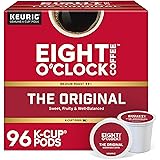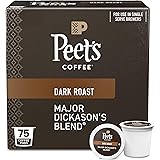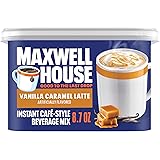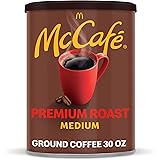Mastering the Homemade Cappuccino: Simple Hacks for Barista-Quality Coffee at Home
Ever wondered if you could truly recreate that beloved coffee shop experience right in your own kitchen, especially that wonderfully frothy cappuccino? The video above demonstrates just how simple it can be, requiring only a handful of common ingredients and some enthusiasm. This innovative method, often popularized through viral trends, strips away the complexity of traditional barista techniques, proving that a rich, creamy, homemade cappuccino is well within your reach. You don’t need an expensive espresso machine or a steam wand to achieve luxurious foam; just a few basic kitchen tools and a desire for delicious coffee will suffice. This approach empowers anyone to elevate their morning routine with an indulgent beverage.
This delightful hack focuses on creating a robust coffee foam that forms the heart of your homemade cappuccino. It’s an accessible way to enjoy a sophisticated drink without any special training or costly gadgets. Forget the long lines and high prices at your local cafe; now, the power to craft your perfect cup lies directly in your hands. We’ll delve deeper into the science behind this magic and offer additional tips to perfect your technique, ensuring every sip is as satisfying as the last. Preparing your own coffee drinks at home also offers the benefit of customizing sweetness and strength precisely to your taste.
The Essential Ingredients for Your Easy Homemade Cappuccino
Crafting this quick and easy homemade cappuccino truly emphasizes simplicity, requiring only four core ingredients you likely already have on hand. The beauty of this recipe lies in its minimalist approach, making it perfect for those spontaneous coffee cravings. Each component plays a crucial role in developing the distinct texture and flavor profile that characterizes a well-made cappuccino. Understanding the function of each ingredient can help you troubleshoot and adjust the recipe to your personal preferences. Gathering your ingredients before you begin ensures a smooth and enjoyable preparation process.
- Instant Coffee: You will need 1 tablespoon of instant coffee granules. The instant variety is key here, as its quick-dissolving nature and concentrated form are essential for creating the whipped coffee foam. While you might typically associate premium coffee with complex brewing, instant coffee shines in this particular application. Experiment with different brands to find a flavor profile that truly excites your palate.
- Sugar: Incorporate 2 tablespoons of sugar into your mix. The video specifically mentions using icing sugar, but any granulated sugar will work effectively. Sugar not only sweetens the coffee but also acts as a stabilizer for the foam, helping it maintain its airy structure longer. Feel free to adjust the quantity based on how sweet you prefer your beverage, or try alternative sweeteners like brown sugar or a touch of maple syrup for different flavor nuances.
- Water: A small amount of water is necessary to dissolve the coffee and sugar, creating the base for your foam. The video initially suggests 1/4 cup (4 tablespoons) but notes that “later I only used what was needed.” Starting with a slightly smaller amount, perhaps 2-3 tablespoons, allows you to gradually add more until you reach the desired consistency for whipping. This careful approach prevents the mixture from becoming too thin, which could hinder foam formation.
- Milk: For the complete cappuccino experience, gather 1/2 cup of your preferred milk. Whole milk typically yields the creamiest and most stable foam due to its fat content, but plant-based alternatives like oat milk or soy milk can also froth beautifully. Heating the milk is crucial as it enhances its natural sweetness and creates a comforting warmth that complements the cold coffee foam.
Unlocking the Foam: The Magic of Whisking
The secret to this spectacular homemade cappuccino lies in the vigorous whisking of the coffee, sugar, and water mixture. This process transforms humble instant coffee into a light, airy, and remarkably stable foam, reminiscent of the popular Dalgona coffee trend. What you are essentially doing is incorporating air into the mixture, creating an emulsion where air bubbles are trapped within the liquid. Patience truly becomes a virtue during this stage, as the texture shift is gradual but immensely rewarding.
As you begin whisking, the mixture will initially appear dark and runny. Gradually, you will notice it lightening in color and increasing in volume. The tiny air bubbles introduced by the whisk cause the mixture to become frothy, then thick, and finally stiff. The goal is to achieve a consistency that holds its shape, much like stiff peaks in meringue or whipped cream. This stiff consistency indicates sufficient aeration and stability, ensuring your foam won’t immediately dissolve into the hot milk. The sugar plays a vital role in stabilizing these air bubbles, preventing them from collapsing too quickly and preserving the luxurious texture of your homemade cappuccino foam.
While an electric hand mixer or a stand mixer with a whisk attachment can significantly speed up this process, the video demonstrates that a simple hand whisk is perfectly capable, albeit more demanding. Whisking by hand is an excellent arm workout and offers a meditative quality, allowing you to observe the transformation firsthand. Continue whisking until the mixture forms firm, distinct peaks, signaling it is perfectly ready to layer into your mug. This meticulous attention to the foam ensures a truly indulgent and visually appealing homemade cappuccino.
Preparing Your Milk: The Creamy Foundation
While you are busy creating your velvety coffee foam, simultaneously preparing your milk ensures efficiency and a perfectly temperature-balanced homemade cappuccino. The video instructs you to “boil milk meanwhile,” which is a straightforward and effective way to heat it. Heating the milk serves several purposes: it makes the drink warm and comforting, slightly sweetens the milk’s flavor, and helps achieve a desirable texture if you introduce air. The gentle warmth of the milk contrasts beautifully with the whipped coffee foam, creating a delightful sensory experience.
When heating milk, whether on the stovetop or in a microwave, aim for hot but not scalding. If you’re using a stovetop, heat it over medium heat until small bubbles form around the edges of the pot, just before it comes to a rolling boil. Be careful not to let it boil over, as milk can quickly spill. For those with a milk frother, you can certainly use it here to add another layer of foam and creaminess to your beverage, although it’s not strictly necessary for this particular recipe. A proper temperature enhances the overall creaminess and integrates seamlessly with the coffee layer.
The goal is to have steaming hot milk ready to go once your coffee foam reaches its ideal consistency. This synchronized preparation allows for immediate assembly, preserving the warmth and freshness of both components. Remember, a well-heated and slightly foamed milk base is crucial for a truly satisfying homemade cappuccino. The warmth of the milk releases aromatic compounds, contributing to the rich sensory profile of your DIY coffee creation.
Assembling Your Homemade Cappuccino: The Art of Layering
Once both your stiff coffee foam and hot milk are ready, the final step is to artfully assemble your homemade cappuccino. This layering technique is what gives the cappuccino its characteristic appearance and ensures each sip offers a delightful combination of coffee and creamy milk. The visual appeal of a well-layered drink significantly enhances the enjoyment, making your homemade creation feel truly special. This process is surprisingly simple, allowing even novice baristas to create a professional-looking beverage.
Begin by spooning approximately half of your whipped coffee mixture into your favorite mug. The video notes it might look “slightly weird haha” at this stage, but trust the process – it will transform beautifully. Next, slowly pour the hot milk over the coffee foam. As you pour, the milk will settle beneath the foam, beginning to integrate the flavors. A gentle mix at this point helps to blend the two components without completely submerging the coffee. This initial mixing creates a homogeneous base for the remaining foam.
Finally, add the remaining coffee mix on top, lightly folding it in or simply letting it sit as a distinct layer. This final topping creates that signature frothy cap that defines a homemade cappuccino. For an extra touch of indulgence, you might sprinkle a pinch of cocoa powder or cinnamon on top, mimicking the professional cafe presentation. Take a moment to appreciate your handiwork before taking that first delightful sip. This method provides a satisfyingly creamy, rich, and wonderfully frothy homemade cappuccino, proving that simplicity often yields the most extraordinary results.







